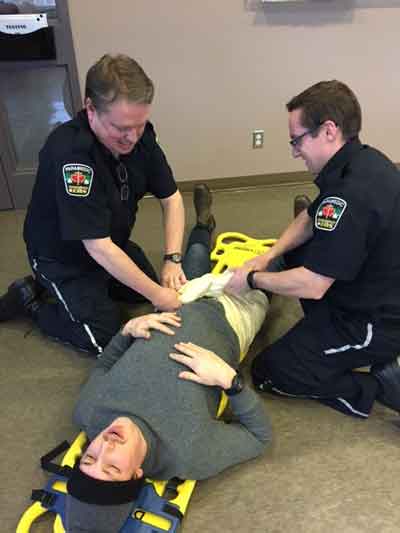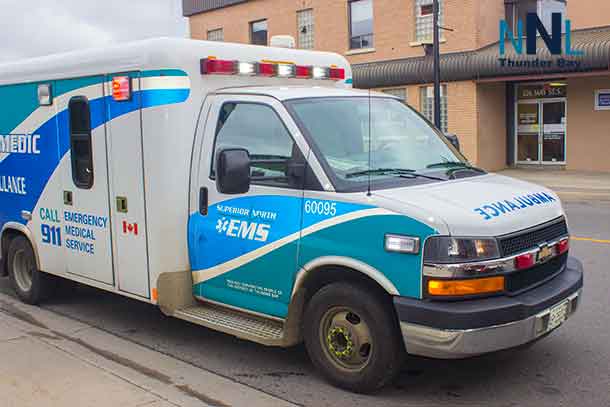
Paramedics update their practice to the reflect the changes in the Ministry of Health BLS Patient Care Standards
THUNDER BAY – The Superior North EMS paramedics are spending time in the classroom learning all of the many changes that are being brought about to them by revisions to their BLS patient care standards. The Basic Life Support Patient Care Standards (BLS PCS) is the standard by which all paramedics across Ontario shall provide the minimum mandatory level of care.
The BLS PCS has been revised based on evidence and best practice recommendations and guidelines. It is aligned with other provincial and federal acts, regulations, and standards.
A couple of the changes that may be noticeable to the public are the changes involving spinal board usage and the changes to oxygen delivery.
The Spinal Motion Restriction (SMR) Standard is a new standard based on medical evidence and best practice. The standard does not allow paramedics to “clear the spine”, but alternatively, provides paramedics direction in the most appropriate method of SMR for the most appropriate patients who require it.
“What you will see in the field, is paramedics assessing a patient using the new Spinal Motion Restriction Standard and then based on that assessment and mechanism of injury, they will or will not apply a c-collar. The biggest change you will see is that paramedics, under the same standard, will not be using a spinal board and head blocks to immobilize the patient. Medical evidence has shown that immobilization on a spinal board can have more detrimental effects and is therefore no longer going to be used for immobilization; use will be limiting it to an extrication or lifting device only” says Marika Listenmaa, Superintendent of Professional Standards.
Paramedics will attempt to minimize spinal movement for those patients who do require a c-collar, the patient may also be permitted to move themselves onto the stretcher based on the mechanism of injury, paramedic assessment, and comfort levels. Some research has shown that an ambulatory patient without back injury, a c-collar, and self-extrication results in the least C-spine movement compared to spinal boards.
In addition to the changes to the spinal immobilization standards, oxygen delivery and ventilation of patients has also been modified to reflect current medical best practices. High flow oxygen will be provided for those specific patients whom evidence has shown benefit from it.
“What you may notice in the field is that paramedics will decide oxygen delivery device and flow rate based on the person’s oxygen saturation level and also based on the patient’s presenting chief complaint as per the new standards, there is no longer the standing order that everyone who has chest pain or is having a stroke, for example, gets high flow oxygen.”
“Paramedics are highly skilled and well trained medical professionals who work well within these new standards to bring the best care forward to patients in their communities. We just wanted the public to be informed of some of the changes that they may come across starting December 11th of this year when the standards come into effect,” Listenmaa said.






